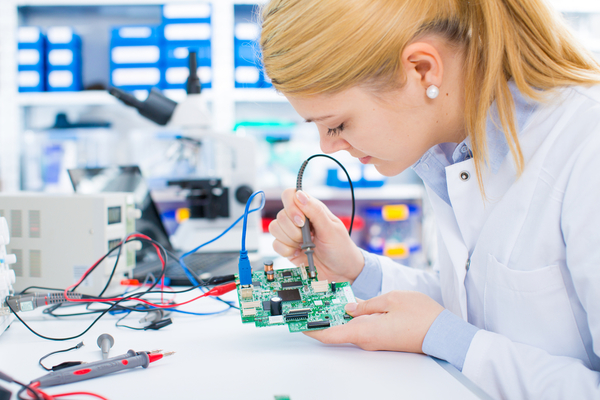Roundtable takes on gender imbalance in STEM
Science, technology, engineering and maths (STEM) skills are vital to Australia’s economy. STEM skills contribute to more than a quarter of Australia’s economic activity, and are associated with 75% of the fastest growing occupations, innovations, and higher paying jobs.[1]
And yet, the gender distribution of people who hold STEM qualifications is highly skewed against women in Australia. Males account for 84% of all people who hold STEM qualifications. Only one in four information technology graduates, and fewer than one in 10 engineering graduates in Australia is female.[2]
How to rectify this gender imbalance —one that is particularly prevalent in the manufacturing industry given its reliance on STEM skills—was a key issue discussed at the second meeting of the Industry, Innovation and Science Women’s Advisory Roundtable, held in late November.
Chaired by the Minister for Industry, Science and Technology, the Hon Karen Andrews MP, the Roundtable is designed to inject fresh ideas into Government policies and programs, accelerate change, and result in more women pursuing careers in technology and science—all of which is essential to the growth of advanced manufacturing.
“Improving women’s participation in STEM and business requires action from all sectors – government, industry, and the education and research sectors,” Minister Andrews said.
“Whilst we don’t know what the jobs of the future are going to be, there has been significant research that shows 75% of the jobs of the future are going to require skills in the STEM subjects. We have to start from a very strong base in those science and maths subjects at school.”
“So many of the jobs of the future will be built on science and technology, so if Australia is to prosper we must engage and draw on the talent of all Australians.”
“Can you imagine what the world would look like—what types of technology and scientific advancements would have been achieved—had we historically benefited from the full participation of the population? We must do more to actively include women in STEM,” said Minister Andrews.
“Increasing participation in STEM by girls and women isn’t just about equity and individual opportunity: it is about the strength of Australia’s research and our scientific and business capability,” said Minister Andrews.
INITIATIVES TO IMPROVE STEM GENDER EQUITY
The Coalition Government allocated $4.5 million in the 2018-2019 Budget for Women in STEM initiatives. This funding builds on previous investments of $13 million made through the National Innovation and Science Agenda. Several of these initiatives are outlined below.
Towards 2025: An Australian Government Strategy to Boost Women’s Workforce Participation
This Strategy outlines the Australian Government’s roadmap to meet its target of reducing the gender participation gap in Australia’s workforce by 25% by 2025.
Girls in STEM Toolkit
Education Services Australia is developing the Girls in STEM Toolkit, designed to encourage Australian girls to study and pursue careers in STEM. The toolkit will help girls understand the diverse range of STEM careers available.
Women in STEM Ambassador
Minister Andrews announced the appointment of the first Women in STEM Ambassador, Professor Lisa Harvey-Smith in October. Professor Harvey-Smith will work to raise awareness of the issues that can hold girls and women back from STEM study and work. She will increase understanding of the opportunities available to girls and women in STEM.
Science in Australia Gender Equity (SAGE) Initiative
The Science in Australia Gender Equity (SAGE) Initiative is a partnership between the Australian Academy of Science and the Australian Academy of Technology and Engineering, which assesses and accredits gender equity policies and practices in Australian science organisations.
The Male Champions of Change for STEM Group
The Male Champions of Change for STEM Group (MCC-STEM) works with influential leaders to redefine men’s role in taking action on gender inequality. It activates peer groups of influential male leaders, supports them to step up beside women, and drives the adoption of actions across private sector and government.
[1] http://womensworkforceparticipation.pmc.gov.au/action-area-jobs-future
[2] Ibid.

